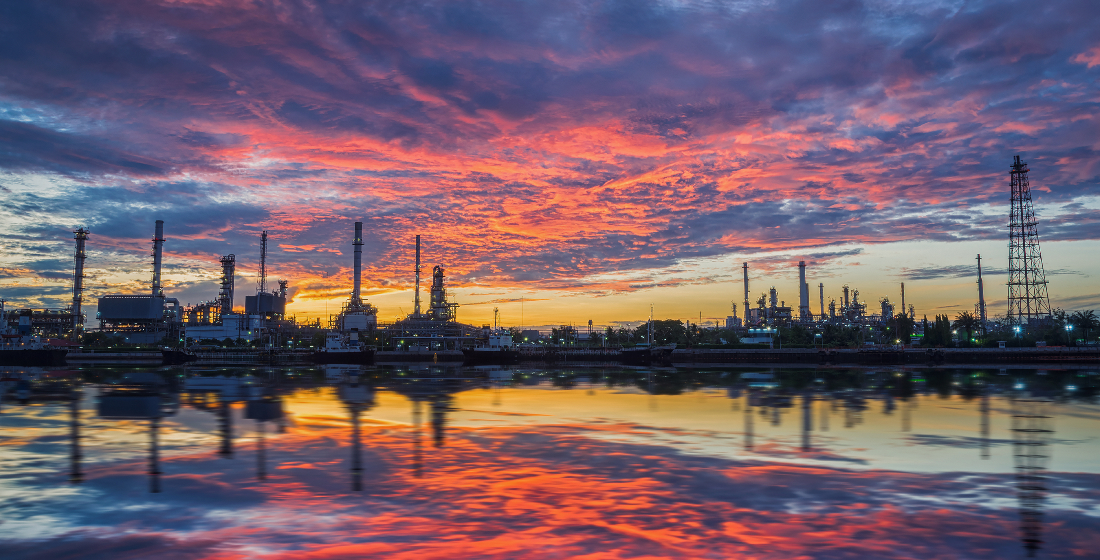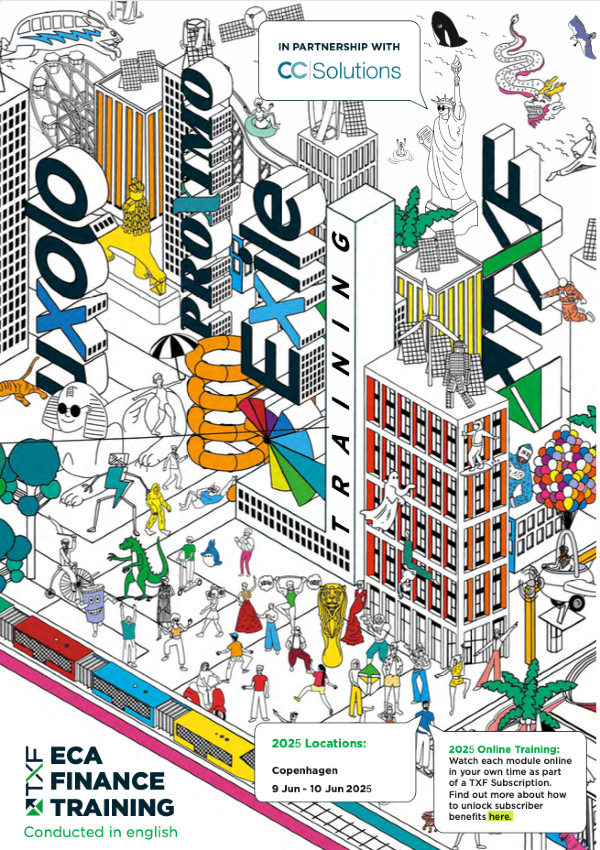Finding the right mix for African power projects
African power generation is still dominated by a mix of hydro and coal, but renewables are finding good purchase in almost every country and at increasingly affordable scale and cost. Finding the right mix in a testing climate change environment though presents many challenges. Jonathan Bell assesses the landscape.

We all know that if you look at a satellite image of the African continent shot at night it stands out drastically from other regions at night. Why? Because it is not lit up with electrification like other regions, and it is also even more startling because the African continent is such a vast land mass on the planet.
There is, as we all know, a huge amount of work to be done to provide African countries with the power they need to improve the living and working conditions of the people. Just look at one country – the Democratic Republic of Congo (DRC) – a country almost the size of Western Europe and with abundant mineral resources, it is estimated that only 9% of the population has electrification. Thankfully, in some countries, much is now being done to meet some of these requirements – but with climate change considerations to the fore, solutions to provide the right mix of power generation have to be much more carefully thought out than in the past.
So it was very refreshing to read the ‘Re-imagining the future of power in sub-Saharan Africa’ whitepaper released earlier this month by GE Power, which takes an holistic view of the requirements, opportunities and challenges the region faces in its quest to power up.
Things are certainly changing. As GE’s CEO for gas power sub-Sahara Africa, Elisee Sezan, states in the report foreword: “For the first time in 2018, electricity access in sub-Sahara Africa surpassed the population growth. There is hope in achieving universal access to electricity in the 21st century if countries can diversify their energy mix and design policies that make their energy economies attractive to financiers.”
And this is the real challenge – getting bankable projects onto the table and over the line. Time and time again, at TXF conferences and other African-related events we hear stories of time-wasted and hopes dashed because basic fundamentals have not been in place to move a project into full financing gear. Thankfully more investors, sponsors and financiers have, over the years, now become very savvy in realising how to prioritise.
While many companies are active in the power sector in the region, it is only right to shine a big light on GE. To lay down a marker, last year, GE reached its 100th power plant installation in sub-Sahara Africa. The company now has an installed base of over 300 turbines in 22 countries in the region, adding up to about 80% of the total energy installed in sub-Saharan Africa.
The whitepaper notes that: “Currently at 64GW, the region’s power generation capacity is projected to grow at 4% each year across the various fuel sources to help meet the energy demand of the growing African population. The region’s current energy mix, primarily dominated by hydro and coal, is becoming more diversified following the rising interest in renewable technologies such as solar and wind.
“Key themes in the regional energy transformation are centred on the 3Ds; decarbonisation, decentralisation and digitisation. On decarbonisation, efforts to reduce greenhouse gas emissions have influenced the preference for wind, solar, geothermal and hydro as part of a more environmentally friendly energy mix.
“To ensure power generation reaches the populations that need it most, sub-Saharan Africa’s grid needs development. It is estimated to be unavailable, on average, only 6% of the time. Hence, the drive for a more decentralised power system to support affordable distributed power technologies. Under digitisation, technology is seen as a primary driver of efficient energy supply with internet enabled solutions such as smart grids and automated metering.”
The whitepaper also discusses energy sector management, financing and regulatory frameworks that create an enabling environment for the sector. It notes: “With increasingly diverse funding from public and private sources, including innovative partnerships with private investors and independent power producers (IPPs), the current narrative that two out of three people in the region needs access to electricity is expected to change. Current projections are that IPPs and public-private partnerships (PPP) will account for 35% of the region’s installed capacity, excluding South Africa, by 2020.”
Sezan at GE comments: “To solve Africa’s energy deficit and improve energy access, there is a clear need for solutions that foster collaboration through partnerships with governments, technology providers and the private sector.”
Looking at the region overall, the report states: “Since 2010, power capacity in sub-Saharan Africa has increased by 40% from 85GW to 119GW, with the last five years producing double digit growth in capacity additions. Across the region, the energy mix has historically been dominated by hydro, except in South Africa, where coal remains a major source of power generation.
“The generation mix has gradually begun to diversify with an increased presence of gas, diesel, and renewables. Gas power generation capacity has almost tripled since 2010. Of greater note is the emergence of wind and solar, having grown from 50MW in 2010 to a capacity of nearly 5GW in 2017. Critical factors that have impacted the energy mix are increased incentive to utilise domestic fuel sources, skills development priorities for local workforce, and environmental events.”
It also notes: “Power generation capacity in Africa is forecast to grow at about 4% per year through 2040 to peak at 570GW. Our expectation is that generation will continue to increase across all fuel sources, with a majority share of new additions being powered by gas and renewable generation technologies.”
Pushing the renewables proposition
And it is the spread of renewables which through smaller scale projects is helping the energy/power diversification pattern. Although a relatively small part of the overall sub-Sharan African requirement for power, looking at how renewables are being developed for commercial and industrial purposes in particular provides us with a good assessment of how such schemes are spreading across sub-Saharan African countries.
The April 2019 report of Fieldstone Africa’s Renewables Index (FARI) specifically examined the developments in the commercial and industrial (C&I) sector. It noted that: “According to a recently released report 494 MW of solar C&I projects have been commissioned in sub-Saharan Africa (excluding South Africa). When you add this to the South African and Moroccan totals (discussed herein), the result is astounding especially considering the state of C&I renewables only a few years ago.
“Standalone projects are a big part of this result as commercial and industrial clients seek to free themselves from the costs, uncertainty around dependability of supply and legacy issues of the utilities. As one African industrialist succinctly put it: ‘if you depend on the utility in the future, it will be very expensive power or the power simply won’t be there”.
The FARI report also noted: “Governments are in a bind as they consider whether this trend can or should be stopped. What is the cost to the broader economy of protecting the utility? What if the utility is the single largest employer in the country? None of these answers are simple, but the move towards more distributed power, including self-generation has to be embraced for the simple reason that resistance ends in uneconomic outcomes that come at great cost and missed opportunities.”
The FARI report asserted: “It is clear that renewable C&I is not the answer to all of Africa’s energy challenges, but it will be an increasing part of the mix. Hence, the best response from governments, and incumbent utilities is to thoughtfully integrate this additional capacity as opposed to try and pretend it is not there or to squelch it.”
Countries throughout the whole of Africa highlighted as being the most attractive in the report for C&I development are: Morocco, Burkina Faso, Kenya, Senegal, South Africa and Nigeria.
On the financing front, the FARI report noted that there were some financing challenges for C&I projects. It stated: “A real limiting factor of outsourced C&I is that the offtaker must have minimal credit quality in order to undertake such a project since even in the best of circumstances the period of payback is several years long. For some industries such as mining, the credit quality and even currency risk elements are superseded by the sale of international commodities. For other industries, banks have also offered developers the option of pooling projects and or offtakes to get a blended credit risk that would not be sufficient as a stand-alone credit.
“Certain lenders are also extending debt tenors beyond the historical 5-7 years to projects with offtakers that have strong credit. DFIs should continue to examine how they can offer credit support to C&I development in markets that are receptive to new projects. The incremental spread of generation may offer a way out of the grindingly slow process of introducing large new utility scale power plants.”
And specifically in relation to Nigeria, there is intense interest taking place on the renewables front, in particular with solar. For a major oil and gas producing African country this is quite a development in its changing energy mix. A recent article entitled Nigerian solar: The path to bankability published by TXF’s project finance arm Proximo and penned by Oliver Irwin, partner at law firm Bracewell, draws out many of the trends in this market.
Irwin notes: “There have been notable recent developments in the Nigerian regulatory and legal framework aimed at promoting investment in solar independent power projects (IPPs). But key bankability issues remain.”
He also pointed out that: “At the recent One Planet Summit, the African Development Bank’s president Akinwumi Adesina stated that renewable energy, particularly solar power, is the key to driving economic development in Africa and combating climate change. And given Nigeria is Africa’s most populous nation (around 200 million) and largest economy, it has caught the attention of the global solar industry.
“According to Power Africa (the USAID-funded energy initiative), around 95 million Nigerians have no access to electricity. This unmet demand, combined with Nigeria having one of the highest levels of solar irradiance in West Africa, makes the country an attractive proposition for local and international solar investment.”
In his conclusion, he remarked: “Nigeria presents a real opportunity for local and international investment in the development of solar IPPs and the wider renewable energy sector. However, to convert this opportunity into bankable projects, the Nigerian government will need to continue to address the liquidity crisis as well as introduce cost reflective tariffs that will encourage and facilitate local and international investment.”
South Africa presents different energy problems
It is fair to say that from a power generation capacity South Africa is a completely different case than any other sub-Saharan country. The country is the world’s third largest exporter of coal. The bulk of power generation, which is dominated by the state-owned utility Eskom, is coal-fired (some 70%+) and it is a country where approximately 400,000+ people are working directly in coal production and a similar number in other coal-related industries. It is also a country currently with a 27% unemployment rate.
Consequently, making coal redundant is not an option at this present time, but the drive to other energy sources is something that is inevitably taking place. To chop out coal mining and make workers redundant on a large scale could lead to civil strife unless these jobs are transferred to say the renewables sector. But is that possible on such a large scale?
Commenting to TXF on the power sector, Robert Besseling, executive director, EXX Africa, says: “An early crucial test for newly inaugurated South African President Cyril Ramaphosa will be liberalisation of the power sector, which has been dominated by cash-strapped state power utility Eskom for generations. Independent power producers have been prevented from entering the market due to a series of politically motivated decisions over the past few years that sought to shield Eskom’s monopoly from IPPs.
“However, Eskom’s debt crisis and the return of load-shedding has necessitated the urgent need for market liberalisation. This is good news for producers of renewable energy, which have rushed into South Africa over the past few years to fill the power vacuum left by Eskom, which sometimes reaches 4,000 MW (the equivalent of powering 3 million homes).”
He also adds: “Ramaphosa’s power sector reform plan will see independent power producers enter into public-private partnerships, as well as incremental, but ultimately substantial, cuts to a bloated and inefficient civil service.”
And, in relation to the changing energy mix, Besseling comments: “Expansion of renewable energy needs to complement the existing coal-based infrastructure to ensure socio-economic benefit, while mitigating the prospect of unrest and political instability that would be triggered by a sudden shift from the ‘coal economy’. One of Ramaphosa’s first acts as president following his inauguration was signing into law the carbon tax law, which is aimed at increasing state revenues from polluting industries, but may push up electricity prices. The entry of renewable energy sources should balance out the inflationary impact of the new carbon tax, if indeed the market is successfully liberalised.”
Some two years ago, at a TXF conference I heard from a GE representative that the company was very close with technology that could deliver total carbon capture from coal-fired power stations. Last week I asked GE what stage this carbon capture was now at for coal-fired stations.
GE responded as such: “As a business we are constantly innovating and investing on new technologies to improve efficiency, availability and emissions of mid-life coal plants as the fastest way to help power producers to deliver on environmental commitments. Over the past couple of years we have made a concerted effort to drive the market from super-critical to ultra-supercritical and now to advanced ultra-super critical technologies (in some regions).
GE adds: “Our most advanced Air Quality Control Systems (AQCS) can remove up to 99% of air pollutants such as, particulate matter (PM) nitrogen oxide (NOx) & sulphur dioxide (SO2). During its first performance test in 2018, Kusile’s Wet Flue Gas Desulphurisation (WFGD) plant, the first of its kind to be installed on the continent, exceeded performance by achieving a 93% removal efficiency rate for SO2. GE has also brought several carbon capture solutions to commercial readiness.”
This is obviously incredibly promising. For now, most export credit agencies (ECAs) and DFIs, as well as leading commercial banks have removed themselves (or are in the process of removing themselves) from coal-related financings. But, could there come a time when financial institutions rethink this dynamic and find a way to finance coal stations with advanced ultra-super critical technologies.”
Back on the scene on the ECA front for Africa is the Export-Import Bank of the United States (US Exim). Ceratinly, the agency will be looking to make up lost ground throughout Africa following several years of being hamstrung in relation to new financings. This development will certainly be of benefit to the US power and renewables production sector.
At the end of last week, US Exim chairman Kimberly Reed, speaking in Pretoria, had this to say: “The rise of the African middle class represents one of the world’s most promising opportunities for growth. The United States needs to be here to realize these opportunities and provide the most innovative and highest-quality goods and services for Africa’s growth and development.
“Among the most critical areas is, of course, the African power sector. This is certainly a top priority for President Ramaphosa here in South Africa. It is estimated that approximately two-thirds of sub-Saharan Africa remains without electricity—affecting some 600 million people. And even here in South Africa, reliable availability of power has become less certain.
“In addition to Africa’s power sector, demand is also increasing for other major capital expenditures needed for growth, such as new roads, airports, telecommunications, and industrial development. These are all hallmarks of rising economies.
Taking the opportunity to swipe at China while also promoting US exports, chairman Reed added: “As you well know, China has seized opportunities in infrastructure and other projects throughout Africa by offering aggressive government-provided financing—and giving Chinese companies the edge in many of these markets. Unfortunately, in some cases, that financing has not been sustainable and has saddled African governments with debts that threaten their countries’ growth and prosperity.
“The United States is offering a different path. Recognising both the opportunities and the challenges, last December, President Trump launched the Prosper Africa initiative to advance mutual prosperity in Africa and the United States. The president’s initiative is aimed at expanding two-way US-African trade and investment.”
Now time to get up to speed on the markets.
Here's our exclusive TXF Essentials subscriber content
Expert briefing: Can tech help suppliers with the problem of portal proliferation?
What do companies do when they get asked by their customers to invoice them via their portal? Sounds good, sounds like digitisation is coming on apace, and e-invoicing has been a boon for digitisation.
JSW Steel: ‘Win-win’ prepayment sets new standard in steel
The $700 million cash-for-metal deal, signed between Duferco and JSW Steel, is the largest trade finance facility ever arranged for an Indian steel company.
ESG-linked commodity debt: Real enough to change perceptions?
ESG-linked debt in the commodity sector has another convert – Mercon. And ESG transparency is arguably a new first mover advantage in commodity trading.
Plus, to top things off...
the news you thought you had but didn't
Jawa 3 IPP-PPA talks resume
Preferred bidder for the 800MW Java 3 gas-fired independent power project (IPP) in Indonesia, Marubeni Corporation, has re-entered talks with state-owned utility PLN in regards to the signing of the power purchase agreement (PAA).
AAA Oils & Fats out with amend and extend refi
AAA Oils and Fats (AAAOF), a trading subsidiary of Singapore-based palm oil processor and distributor Apical Group, is self-arranging the refinancing of the revolving credit facility (RCF) tranche of a $800 million loan signed in 2017.
More details on Jaguar Land Rover ECA financing
Jaguar Land Rover (JLR) is in talks with two export credit agencies (ECAs) over potential funding options for its fiscal year 2020 (which began on 1 May).
Bidders shortlisted for A49 PPP
Two bidders have been shortlisted for the €500 million ($556 million) A49 motorway PPP in Germany.
Lujan de Cuyo power financing nears close
NYSE-listed independent power producer Central Puerto (CEPU) is expected to reach full financial close by the end of this month on a $56 million 15-year loan from KfW-IPEX Bank to finance construction of the 93MW Lujan de Cuyo cogeneration project in Argentina.
Fujairah 3 CCGT RFP launched
EWEC has launched the request for proposals (RFP) for the 2.4GW Fujairah 3 (F3) CCGT project in the UAE.
EBRD and IFC considering Masrik 1 solar loan
The EBRD and IFC are considering loans to Fotowatio Renewables Ventures (FRV) for its 55MW Masrik 1 solar project in Armenia.
KNPC's Dabdaba solar PV project mandates emerge
State-owned oil company Kuwait National Petroleum Co (KNPC) is expected to mandate banks in Q4 2019 to finance development of the 1.5GW Dabdaba solar PV scheme in Kuwait.
IDBZ launches consultancy EOIs for solar and hydro projects
The Infrastructure Development Bank of Zimbabwe (IDBZ) has called for expressions of interest (EOIs) from consultancy firms to undertake detailed feasibility studies and ESG assessments for the proposed 50MW Rufaro PV project and the 2.4MW Odzani hydro scheme. EOIs are due by June 13.





